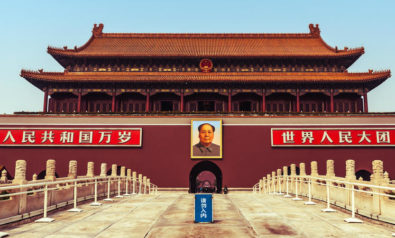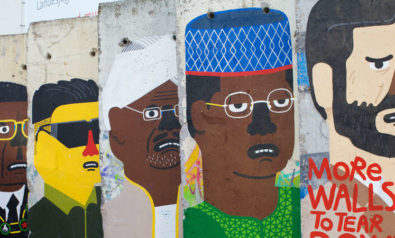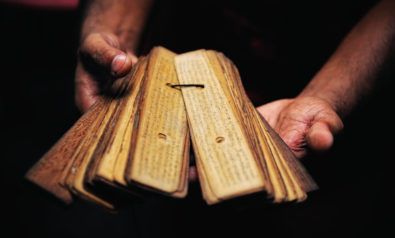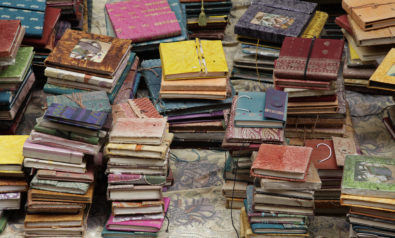Literature helps young people realize they are not alone in the world.
The National Children’s Book and Literary Alliance (NCBLA), founded by young people’s authors and illustrators, believes that literacy is far more than the ability to read. Its primary function is as an advocacy and education organization promoting literacy, libraries and literature. Censorship and reading rights issues are an auxiliary interest rather than a primary focus. In the following discussion with Fair Observer’s Anna Pivovarchuk, Mary Brigid Barrett, president and executive director of the NCBLA, and Maria Salvadore, a specialist in children’s literature, discuss the importance of the kids’ right to read.
Anna Pivovarchuk: The NCBLA’s aim is to inform “The American public of the reality of young people’s literacy, literature, library, and education needs …” Could you elaborate? How do you perceive this “reality” differently from those who set out to challenge books?
Mary Brigid Barrett: We believe every person has the right to read. In a free society, this includes the right to choose what you want to read. Parents, as the primary educators of their own children, have the responsibility of ensuring their children learn to read and of guiding them in their selection of reading materials. We recognize there will be occasions when conscientious parents will find certain books and/or materials inappropriate for their children. We acknowledge the right of parents to restrict materials they deem objectionable and, in the case of school assignments, to ask for alternate reading for their children. But we believe this right carries with it the obligation to respect the right of other persons to make different choices for their own children and themselves.
Pivovarchuk: The organization was formed in 1997. What was the driving force behind the project?
Barrett: I grew up under challenging family circumstances. My school and my neighborhood library, which I could walk to, were safe havens when my home was not. The ability to read and easy access to a wide variety of free reading materials, including fiction and information books, allowed to me to find out that I was not alone in my circumstances, and showed me there were many other ways to live, opening a world of opportunities. The stories I read gave me hope and permission to dream. The information I learned by reading gave me the tools to accomplish those dreams.
When my first book, Sing to the Stars, was published, I was asked to give author presentations in a wide variety of schools in the Midwest and New England. I found that many children did not have the opportunities I had as a child. Some did not come from families where reading books and newspapers were a daily habit. Some did not have family members who could read aloud to them. Some did not have easy and ready access to reading materials. Their schools did not have libraries, or the libraries were in deplorable conditions. Some of the children I met had no school library and their neighborhood library had closed, so they had no access to books at all.
At the same time, in my hometown of Franklin, Massachusetts, due to town budget cuts, our public library had to severely limit its hours of operation, and school library aides were laid off, with the result that all the elementary and middle school libraries in our town were closed. Ironically, Franklin is home to our nation’s first public library, created with books donated by Benjamin Franklin, a fact often touted by town administrators.
These mirror experiences turned me into a literacy/library activist. When I shared these experiences with my friends and mentors — Katherine Paterson, Natalie Babbitt and David Macaulay — we decided to create the NCBLA to see what we could do to ensure kids have the same opportunities to read and the same easy access to books that we had as children.
Pivovarchuk: How common are book challenges? Some anti-censorship charities have noted an increase in the past years, but realistically, is this a widespread phenomenon, or more of an aberration?
Maria Salvadore: In my experience, attempts to censor have been relatively small but, in surrounding counties outside of Washington DC, attempts to censor are quite common. It harkens back to the period before the adult world became topics in children’s books (that started in the 1960s with Louise Fitzhugh’s Harriet the Spy and Maurice Sendak’s Where the Wild Things Are, marking the changes in what was considered appropriate — or at least accessible to children).
Pivovarchuk: Well, yes, censorship, particularly literary censorship, is largely a matter of a difference of opinion and interpretation. With children’s books, there are infinitely more gray areas of contention. After all, sexually explicit content, offensive language and unsuitability for a certain age group are the most often cited reasons for book bans. What are the unique challenges children’s literature faces compared to adult content?
Barrett: Book challenges related to children’s books are often motivated by a parental desire to protect kids in an increasingly complex world in which points of view vary. Proceeding with true compassion and empathy for parental views and fears is essential; it is also respectful and kind. Parents and guardians have the right to guide their children’s reading selections. Problems arise when parents, or organized groups, want to dictate the reading selections of children who are not their own, as when parents or groups insist certain books be removed from public classrooms, schools or neighborhood libraries.
Katherine thinks that in some parents it ignites a much greater parental fear — the fear of your child dying. One of the main child characters in the book dies, and not from an illness or premeditated act, or adult abuse or error, but from a total accident where no one is at fault and no one is responsible.
— Mary Brigid Barrett
A few years ago, one of my author colleagues in Canada was contacted by a friend — a parent fighting book challenges in her child’s public school. Her response to her friend was to state that if the challenged book was removed from the school library, to also remove her books; for certainly if the challenged book was offensive to someone, her books could be found offensive to someone, too. I often thought her response should inspire a public service campaign featuring a video that showed authors, past and present, removing their challenged books from library shelves. Imagine a visual showing Mark Twain, Judy Blume, Charles Darwin, Tennessee Williams, Toni Morrison, Walt Whitman, Katherine Paterson, Martin Luther, J.D. Salinger, Thomas Jefferson, Harriet Beecher Stowe, Galileo Galilei, Maurice Sendak and thousands others walking into a library and taking their challenged books and work off the shelves. The shelves would be empty.
Pivovarchuk: Children’s books — or literature for young adults — have been the most frequently challenged throughout history. From Huckleberry Finn, The Catcher in the Rye, to the Harry Potter series that topped the list over the last decade, and now to Captain Underpants, which pushed the controversial Fifty Shades of Grey off the top spot in 2013. What it is about these books that makes parents so angry?
Barrett: I think sometimes, on a surface level, parents feel that exposure to certain books challenges the beliefs and values they are trying to instill in their children, and they feel threatened. As a parent and teacher, I totally understand those feelings, especially when talking about age appropriateness issues. Over the last three years, visiting schools and working with children, I have found a number of kids as young as third grade who read The Hunger Games books. No matter how intellectually precocious a third grader is, few, if any, third graders would have the experience level and the emotional maturity to deal with the violence level in those books.
But banning The Hunger Games is not the answer. I found, as a parent, the best way to handle a situation where your child is adamant about reading a book, which you are worried is inappropriate, is to read it aloud with your child, so you can comment on it; your child can share his or her reaction to what is read; and you can then have a discussion with your child, sharing your values, your feelings about what is read and, in turn, your child can share his or her concerns and ask you questions.
A dear friend, author Katherine Paterson, has often found her books on the most challenged children’s books list. One of those, The Bridge to Terabithia, is often challenged for a variety of reasons. Amongst challenger claims are that it contains offensive language, promotes secular humanism, new age religions, cults and witchcraft. But Katherine thinks that in some parents it ignites a much greater parental fear — the fear of your child dying. One of the main child characters in the book dies, and not from an illness or premeditated act, or adult abuse or error, but from a total accident where no one is at fault and no one is responsible. Katherine feels that the real reason the book is challenged is that parents want to feel they are in control, and have the ability to keep their children safe. But deep down, we all know that no matter how much we love our kids, no matter how we try to protect them, anything can happen at any time. The Bridge to Terabithia reveals the deepest, darkest fear we all have as parents: that we can care for our children, but we cannot control the universe — it can take them at any time.
Pivovarchuk: We all know how young people are: we have all been there. A ban, a prohibition is hardly a deterrent — rather an incitement. Do you think that banning certain books is futile in this respect, particularly with the wide availability of online resources today?
Barrett: Speaking as a parent and teacher, yes, banning a book practically ensures that kids will seek it out. I have three children, now grown up. When they were little, our oldest and youngest were irrepressible readers; motivation was never an issue. But our middle child, Emily, never sat still, and motivating her to read was a challenge. I often had quiet conversations with her oldest sister, Elizabeth — conversations I was sure Emily was eavesdropping on — giving Liz a book to read, instructing her that she should hide it from Emily, because Emily was too young to understand the book, or that the book had a situation in it that Emily should not be exposed to yet. Of course, Emily would search the house for the book and devour it whole. So yes, a great strategy to get a young person to read a book is to tell him or her: “This book is not for you – don’t you dare read it!”
Salvadore: If parents and children read together, it is possible for a parent to begin a meaningful conversation with their kids. Books can provide a neutral way to launch discussions about difficult topics and how these are handled or addressed in books. Rather than ban books, I think parents should read them with their children.
Pivovarchuk: What is it about young people’s right to read that is so important, perhaps more so than for adults?
Barrett: Reading all kinds of books — literary fiction, entertaining fiction, informational nonfiction, history, science, biography, poetry, drama, travel and so much more — helps young people to know that no matter what their familial and life circumstances, they are not alone in the world.
If parents and children read together, it is possible for a parent to begin a meaningful conversation with their kids. Books can provide a neutral way to launch discussions about difficult topics and how these are handled or addressed in books. Rather than ban books, I think parents should read them with their children.
— Maria Salvadore
Books also give young people the opportunity to experience things in their heads before experiencing them in real life — like having a dress rehearsal for the real world. Kids can experience joy and pain, glory and defeat, beauty and terrible ugliness, all vicariously, previewing all that can unfold in life. That knowledge can help them make the life choices that propel their most powerful, and quiet, dreams and ambitions.
As a parent and teacher, I want my kids and all kids, to have more choices, not less. The challenge of every adult who lives with and works for young people is to introduce books to them when they are not only intellectually capable of understanding content, but emotionally capable of handling content. That is a very difficult job, and all of us are going to make mistakes. I want to err on the side of expanding experience and knowledge. The answer is not to censor; it is to make the reading experience a shared experience.
Pivovarchuk: In America, freedom of speech is enshrined as a fundamental right in its Constitution as the First Amendment. Do you think this makes a difference to the practice of challenging books?
Barrett: In 1820, Thomas Jefferson wrote: “I know no safe depository of the ultimate powers of the society but the people themselves; and if we think them not enlightened enough to exercise their control with a wholesome discretion, the remedy is not to take it from them, but to inform their discretion by education. This is the true corrective of abuses of constitutional power.”
I believe, and I think the NCBLA board would agree, that the First Amendment, free public libraries and free public education are the heart and soul of American democracy, because all three provide the essential “education” referred to by Jefferson. A threat to the freedom of speech, or public libraries and education, is a threat to the health of our democracy.
Pivovarchuk: What about “dangerous books”? There have been instances in history where books have caused a lot of suffering, like Mein Kampf, or radical, extremist literature and pamphlets. Do you believe a book can cause harm?
Barrett: I believe it is people that can cause harm, not books. In order for us to grow individually and collectively as a society and culture, ideas need to be out there, to be shared, talked about, expanded upon and argued over. Speaking as an artist and a writer, sharing your work, your ideas, can be a scary experience, because once you share your work with your fellow human beings, you no longer have control over it. Quite often, the reactions, interpretations and assessments of your work can be surprising, most often in ways that amaze and delight, and less often in ways that confuse and threaten.
Some ideas and creative inventions resonate and immediately inspire and propel advancements in ways both intended and unintended. Other ideas and creative productions provoke controversy, and sometimes divide peoples, but that division, that conflict and contrast, can also propel individual human and societal advancement. We need everything — the good, the bad, the ugly, the beautiful, the dark and the light — because we never know what is going to seed the next human advancement or an individual’s personal development.
The views expressed in this article are the author’s own and do not necessarily reflect Fair Observer’s editorial policy.
Support Fair Observer
We rely on your support for our independence, diversity and quality.
For more than 10 years, Fair Observer has been free, fair and independent. No billionaire owns us, no advertisers control us. We are a reader-supported nonprofit. Unlike many other publications, we keep our content free for readers regardless of where they live or whether they can afford to pay. We have no paywalls and no ads.
In the post-truth era of fake news, echo chambers and filter bubbles, we publish a plurality of perspectives from around the world. Anyone can publish with us, but everyone goes through a rigorous editorial process. So, you get fact-checked, well-reasoned content instead of noise.
We publish 2,500+ voices from 90+ countries. We also conduct education and training programs
on subjects ranging from digital media and journalism to writing and critical thinking. This
doesn’t come cheap. Servers, editors, trainers and web developers cost
money.
Please consider supporting us on a regular basis as a recurring donor or a
sustaining member.
Will you support FO’s journalism?
We rely on your support for our independence, diversity and quality.



















Comment